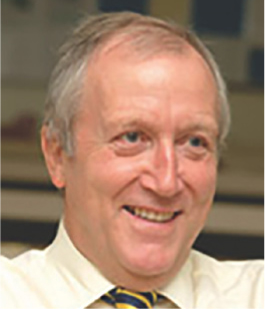Article

Readers will hopefully recall that, in my last Comment, I discussed a series of articles which were published in Dental Update in 1986 which included the occasional series entitled ‘Dentistry in the year 2000’, and that some predictions made for 2000 indeed applied to 2020. However, there were notable exceptions in the subjects covered, so I then took a look at volume 14, published throughout 1987.
I found another rich seam of information! Among the articles of interest was one by our Emerita Board member, Edwina Kidd, who addressed the subject – Dental caries: problem solved?1 This might be considered to be an outrageous title for 1987, but then, it did have a question mark! As long ago as 1987, she wrote about the increasing life expectancy of the public (which has continued, thankfully) along with the problems that caused, and the increasing prevalence of root caries with age, a topic which has recently received attention in Dental Update by way of two excellent papers. She wrote, that ‘although many children are caries free, there are still some with a remarkably high level of disease’ – still the same today. Edwina goes on to describe methods for testing salivary flow rate and its buffering capacity as a means of diagnosis of caries risk and also suggests microbiological examination for bacterial counts, given that caries is a specific bacterial infection and that this could form part of the assessment of caries risk. Neither of these has been widely adopted, but it seems that there remains, today, a need for the development of a simple, readily acceptable method of assessing caries risk. Edwina concluded that ‘the profession is working in challenging times’, adding that ‘the problems of dental caries are far from solved’, and that ‘academics and practitioners alike are privileged to have the opportunity to solve them’. Nothing has changed, has it?
Another paper that caught my eye was Ted Renson's Editorial Comment entitled ‘Funding in the NHS in the 1990s’.2 He wrote – ‘…the cost of healthcare rises faster than costs in general’. Indeed, at that time, despite an increase of 19% in NHS spend in ten years, patient care had not improved. His suggested approach was to decentralize the system and return healthcare to the communities that it is meant to serve. Would that have worked in the year 2000? Would it work today? In that regard, to illustrate that the NHS funding problems still exist, the current status of NHS dentistry will be discussed in the next issue in a paper by Martin Kelleher.
Finally, some things never go away. With the massive difficulties that the world is facing regarding COVID-19, there were two relevant papers in Dental Update in 1987.3,4 It may be worth adding, for young readers, that that was around the beginning of infection control in dentistry. Prior to that, dentists practised without wearing gloves, even for minor oral surgery, a horrifying thought today. Then I alluded to the fact that glove wearing would increase alongside the increased incidence of diseases such as hepatitis B and AIDS, although not all infected patients could be identified by their history. These problems have not gone away, while, at the same time, new ones have arrived to challenge our infection control.

